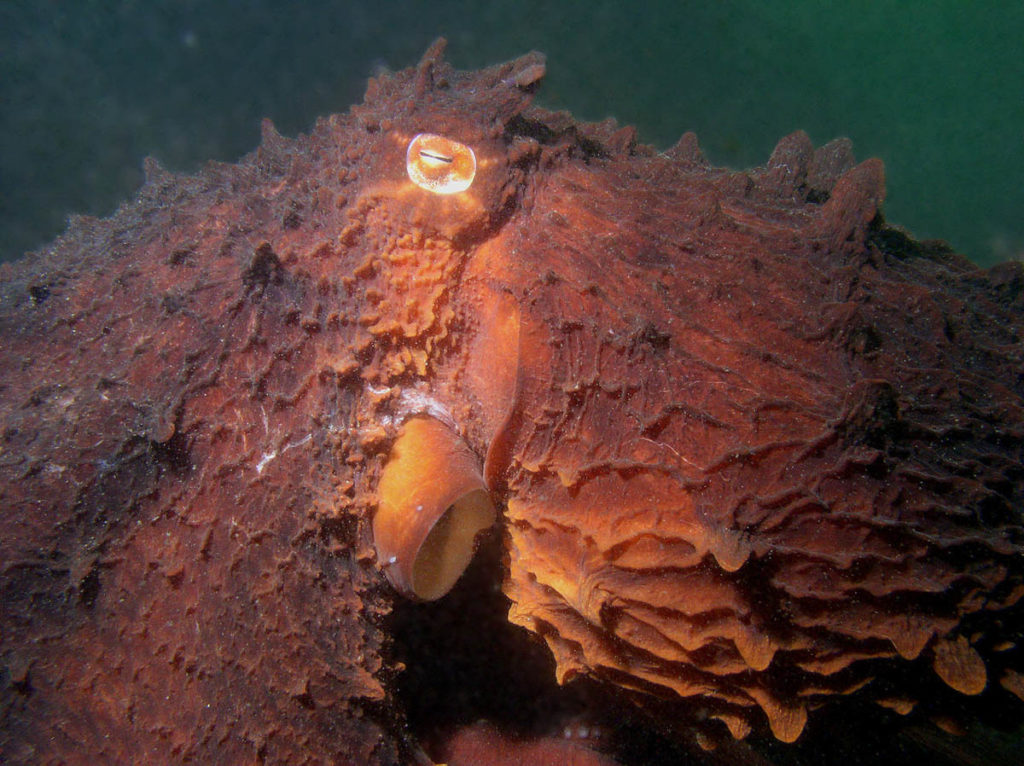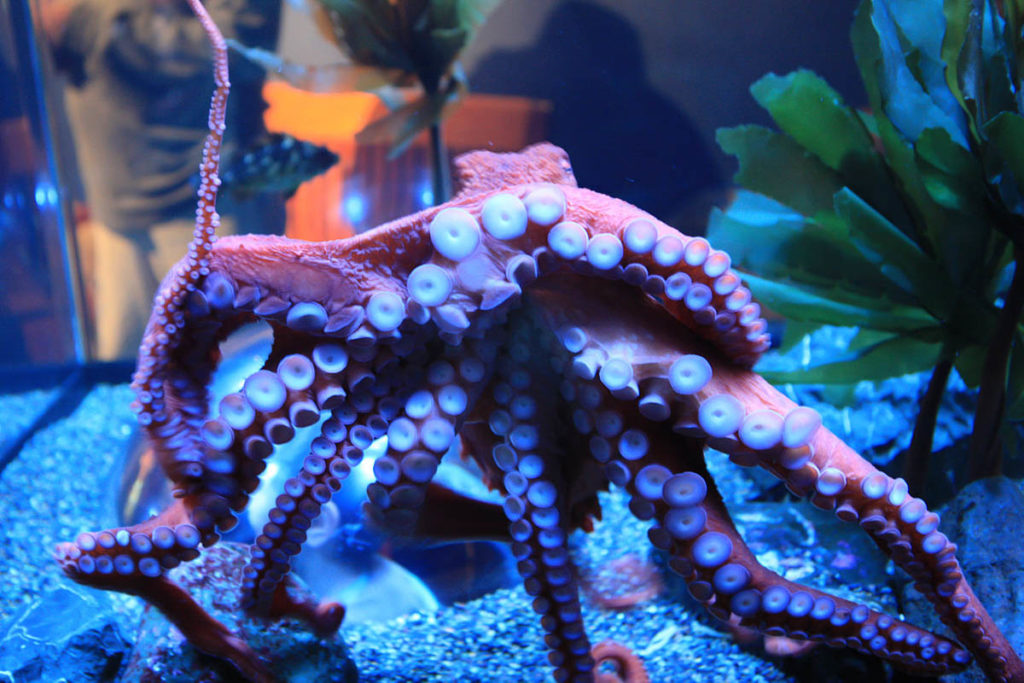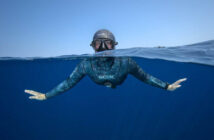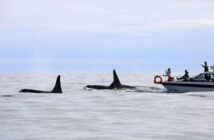A large marine cephalopod belonging to the genus Enteroctopus is the giant North Pacific Octopus (Enteroctopus dofleini, formerly also called Octopus apollyon).
The North Pacific Octopus calls the coastal waters of the North Pacific, California, Oregon, Washington, British Columbia, Alaska, Russia, Japan, and the Korean Peninsulas home. It can be found in water as deep as 2,000 m (6,600 ft) from the intertidal zone (ocean meets the land between high and low tides) and is best adapted to cold, oxygen-rich water. Based on a scientific record of a 71 kg (156 lb) individual weighed live, it is the largest octopus species. One North Pacific Octopus with an arm span of 9.8 m (32 ft), and weighing 300 pounds is listed in the Guinness World Records.
Shrimp, crabs, scallop, abalone, cockles, snails, clams, lobsters, fish, and other octopuses are known as part of the North Pacific Giant Octopus diet. With its suckers, food is procured and then bitten using its tough beak of chitin. (fibrous substance) Spiny dogfish and shark carcasses have been found in giant Pacific octopus middens, providing strong evidence that these octopus prey on these for food as well.

The North Pacific Octopus, as with all marine life, has natural predators. Even when the female is present to protect them, scavengers and other organisms often attempt to eat octopus eggs. Many other zooplankton and philtre feeders prey on the North Pacific Octopus. As a food source, marine mammals such as harbour seals, sea otters, and sperm whales rely on the giant Pacific octopus. Pacific sleeper sharks are also confirmed predators. In addition, octopus is a major source of protein for human consumption (along with cuttlefish and squid).
Pacific Giant Octopuses breed once before death. The female lays between 120,000 and 400,000 eggs. Eggs are chorion-coated, and she attaches her eggs to a hard surface. She blows water over the eggs continuously and grooms them to remove the algae and other growths. In about 6 months, the eggs hatch. Hatchlings are about the size of a rice grain, and very few survive into adulthood. The Mother Octopus then enters a phase called senescence (deterioration with age) after reproduction, which involves evident changes in behaviour and appearance, including decreased appetite, retraction of the skin around the eyes, giving them a more pronounced appearance, increased uncoordinated pattern activity, and white lesions throughout the body. Although the length of this phase is variable, it usually lasts about one to two months and then she dies.

Pacific Giant Octopuses are considered the most intelligent invertebrates. Due to their size and interesting physiology, they are commonly seen in aquariums, and have shown the ability to recognize people with whom they often come in contact. These responses include jetting water, changing body texture, and other behaviours. They have the ability to solve simple puzzles, open bottles that are childproof and use instruments. In laboratories and aquariums, they have been known to open tank valves, disassemble expensive equipment, and generally wreak havoc. Some researchers claim they are capable of motor play and have personalities.
Approximately 3.3 million tonnes, worth $6 billion annually, are fished commercially, and the North Pacific Octopus are not currently under the protection of Convention on International Trade in Endangered Species of Wild Fauna and Flora or evaluated in the IUCN Red List.








